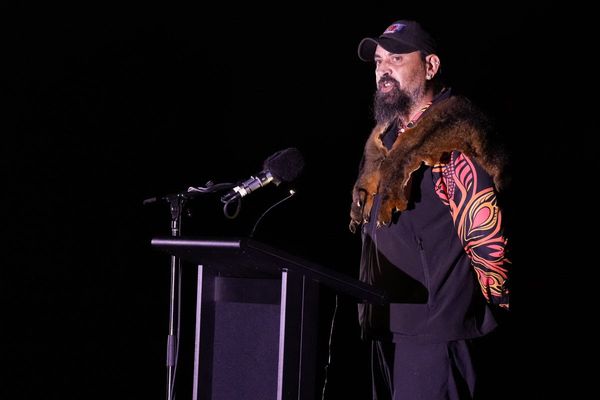In 1930, golfer Bobby Jones accomplished a feat no one else has repeated in the sport.
Back then, Robert "Bobby" Tyre Jones Jr. (1902-1971) won golf's four key competitions all in the same year. In addition to capturing the U.S. and British Open championships, he also claimed the amateur titles in both nations. Yet perhaps his greatest achievement was to create the Masters tournament and turn it into the most prestigious golf tournament held at the same venue every year.
In mid-April, millions of golf fans religiously follow the highest-ranked professionals from around the world, as well as a small group of promising amateurs, through four rounds and 72 demanding holes at Augusta National Golf Club in Augusta, Ga. The layout offers a supreme challenge for crafting shots through the long, emerald-green fairways and putting accurately on lightning-quick, heavily-sloped greens. And it kicks off a quest to join the few who have won all four majors in the modern era: the Masters, the PGA championship in May, the U.S. Open during Father's Day Weekend and The Open Championship in Britain in mid-July.
"Truth be told, there was another reason — beyond my previous poor showings — for my burning desire to win the Masters," golf legend Jack Nicklaus wrote in "Jack Nicklaus: My Story." "I wanted to win it for the man who has given birth to the club and tournament and who has been at the forefront of my golfing consciousness from the very beginning: Mr. Bobby Jones."
At The Masters: How Gene Sarazen Hit The "Shot Heard Around The World"
Grow Your Passion Like Bobby Jones
Yet even beyond the Masters spectacle, Jones employed a supreme work ethic to help grow the game of golf.
He combined a talent in communicating the concepts governing key types of shots — from driving to sand shots with the wedge — with clarity and brevity with a burning desire to introduce the game to as many people as possible. Jones' devotion to the sport helped expand its popularity for generations to come.
"Many can play great golf, or they can write beautifully. Bobby Jones was one of the few who could do both," Larry Cloud, a former information systems officer at the Southern California Golf Association and longtime president of Santa Monica-based Penmar Golf Club, one of the largest public golf clubs in California, told IBD. "I find the descriptions of how he swings the club are so clear, so precise, that you know what he's actually talking about. That's rare."
From 1927 to 1935, Jones, also a full-time lawyer, wrote two syndicated weekly columns. He also wrote articles for publications including The American Golfer. Jones and sports writer O.B. Keeler collaborated on his first book, "Down the Fairway" in 1927. In 1931 and 1932, Jones wrote the technical material and starred in 18 short motion pictures produced by Warner Brothers.
Use Media To Advance Skills
In one film, Jones focused on one of the biggest amateur errors: how to stop a bad slice. With few words, he explained three simple reasons why a right-handed golfer often sends the ball careening way out to the right. His simple fix? Lead the downswing with the left arm, not the right. Such a move encouraged an inside-to-outside swing path. To drive the point home, film editors drew a white line tracing Jones' club movement on the screen, from start to finish.
Jones also penned the script for a feature film produced for A.G. Spalding, the sports equipment entrepreneur.
"I estimate that in these activities I wrote at least half a million words about the game of golf," Jones wrote in his 1966 classic, "Bobby Jones on Golf."
Leaders & Success: How Tiger Took Home His Fifth Masters Title
Jones: Rise From Your Challenges
Jones was born on March 17, 1902, in Atlanta. The son of a lawyer and homemaker got sick often. So the family doctor recommended Bobby take up golf for the sake of his health. At age 6, Jones won his first tournament that same year at the East Lake Golf Club, his family's home course.
As a young teenager, he won the inaugural Georgia Amateur Championship at Capital City Club in the town of Brookhaven, Ga. The U.S. Golf Association took notice. It invited young Jones to play in the U.S. Amateur championship at Merion, a vaunted U.S. Open venue just outside Philadelphia. He reached the quarterfinals of the one-on-one match-play event.
Bobby developed a passion for reading and excelled in academics. He studied at Emory University, transferred to Harvard College to earn a B.A. degree in English, then returned to Georgia to collect a Bachelor of Science degree in mechanical engineering at Georgia Tech. On top of that, Jones entered the Emory School of Law. Three semesters in, he passed the Georgia State Bar, paving the way to a job at his father's law firm.
Despite pursuing a full-time career in law, Jones found the time to compete in golf — and win.
Be Courageous And Timid
The 5-feet, 8-inch athlete with the sweeping, buttery-smooth swing entered 31 major tournaments. He won 13 events and scored 27 top-10 finishes. In 1923, Jones won the U.S. Open for the first time at Inwood Country Club in New York, three years after his debut in the tourney. Three years later, Jones became the first player to achieve a "golf double," winning both Open championships in the U.S. (at Scioto Country Club in Columbus, Ohio) and U.K. (at Royal Lytham and St. Anne's Golf Club in England) in 1926.
"To approach the hole remains the ultimate object in the game. Once the round is under way, the business in hand becomes that of getting results. Nothing else matters," he wrote in "Bobby Jones on Golf." In early 1930, Jones placed a 50-and-1 odds bet early in 1930 with British bookies that he would win all four of the pre-Masters era majors. That year, Jones was proved right and collected more than $60,000.
He credits Stewart Maiden, a native of the legendary Scottish golfing town of Carnoustie and head pro at East Lake, as well as Willie Ogg as key influences. So was J. Douglas Edgar, the club pro at Druid Hills Golf Club in Atlanta, who bested Jones by 19 shots at the 1919 Canadian Open.
J.H. Taylor, multiple winner of The Open, taught Jones that every superb golfer possessed "courageous timidity."
"He must have courage to keep trying in the face of ill luck or disappointment, and timidity to appreciate and appraise the dangers of each stroke, and to curb the desire to take chances beyond reasonable hope of success," Jones wrote.
Keep Going As You Age Like Jones
Despite retiring from competition in November 1930 while still in his late 20s, Jones wasn't finished with golf.
He struck a rewarding partnership with financier Clifford Roberts. Together, they turned the 365-acre Fruitland Nursery into Augusta National Golf Club during a two-year construction project completed in 1933. A year later, they started the Augusta National Invitational Tournament, later dubbed the Masters.
Jones hired Dr. Alister MacKenzie, a kilt-wearing Scot who had won wide acclaim for his course designs, including Cypress Point and Pasatiempo in northern California, to jointly design the course. MacKenzie insisted on large greens. They showed an average width of 32 yards and a depth of 30 yards. They offered the casual player a better chance of making the putting surface and enjoying the game more.
Augusta National "is one of the few courses that really presents two games most every hole, a game to reach the greens, and another to figure (out) the ever challenging contours after reaching the greens," Jones said.
Broaden The Appeal
Jones and Roberts invited members of high society in the Northeast to their club and annual tournament. They organized private train parties using the Atlantic Coast Line Railroad. By the mid-1930s, well-dressed women spectators enjoyed the shot making and gorgeous botanical-garden-like scenery while wearing fur coats, above-the-knee skirts and heels. They gave the tournament a unique style and panache.
To give the tournament even more class, in 1949 the pair awarded an emerald green jacket to the winner each year. As highlighted in CBS TV telecasts over the decades, the jacket presentation ceremony has become one of the most iconic rituals in all sports.
Jones played his last golf round at East Lake Golf Club on Aug. 18, 1948. Later, Jones could no longer walk due to syringomyelia, a rare spinal cord disease. He died of cardiovascular disease in 1971 at the age of 69.
Bobby Jones Keys
- Won multiple major golf championships, including four in a single year. Cofounded Augusta National Golf Club. Launched the Masters championship.
- Overcame: Early childhood sickness.
- Lesson: "To me, golf is an inexhaustible subject."
Please follow Chung on X/Twitter: @saitochung and @IBD_DChung







